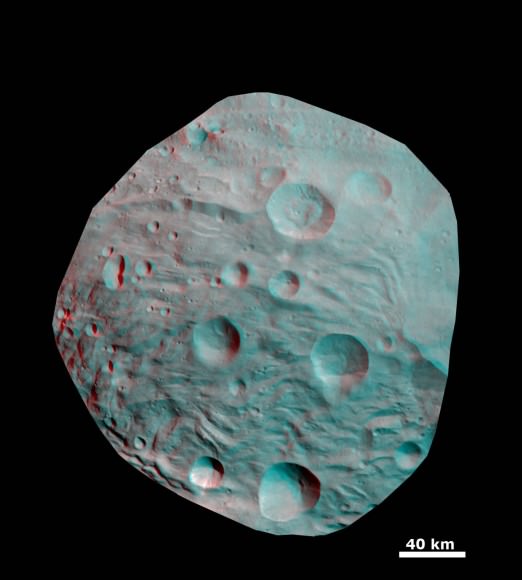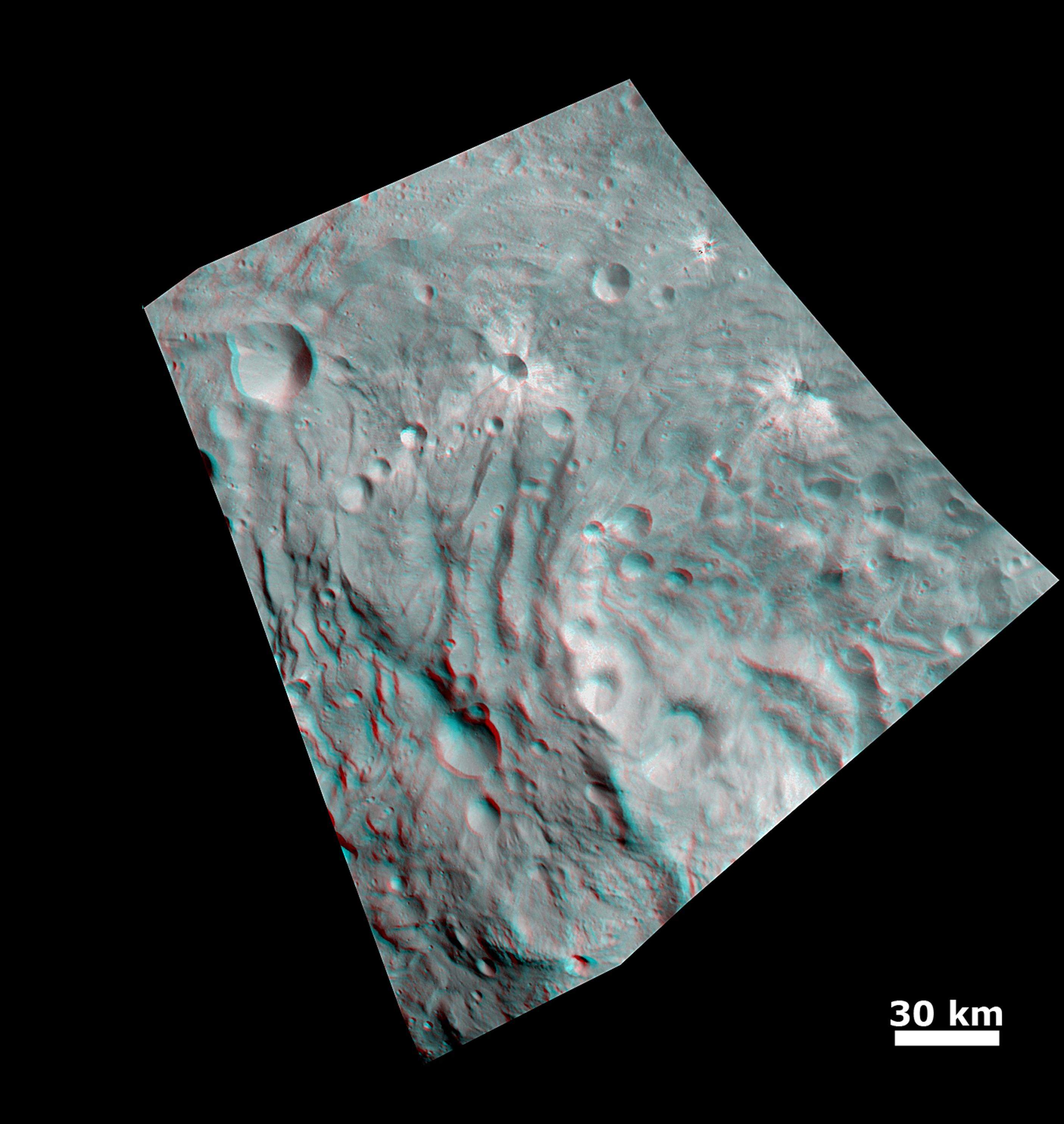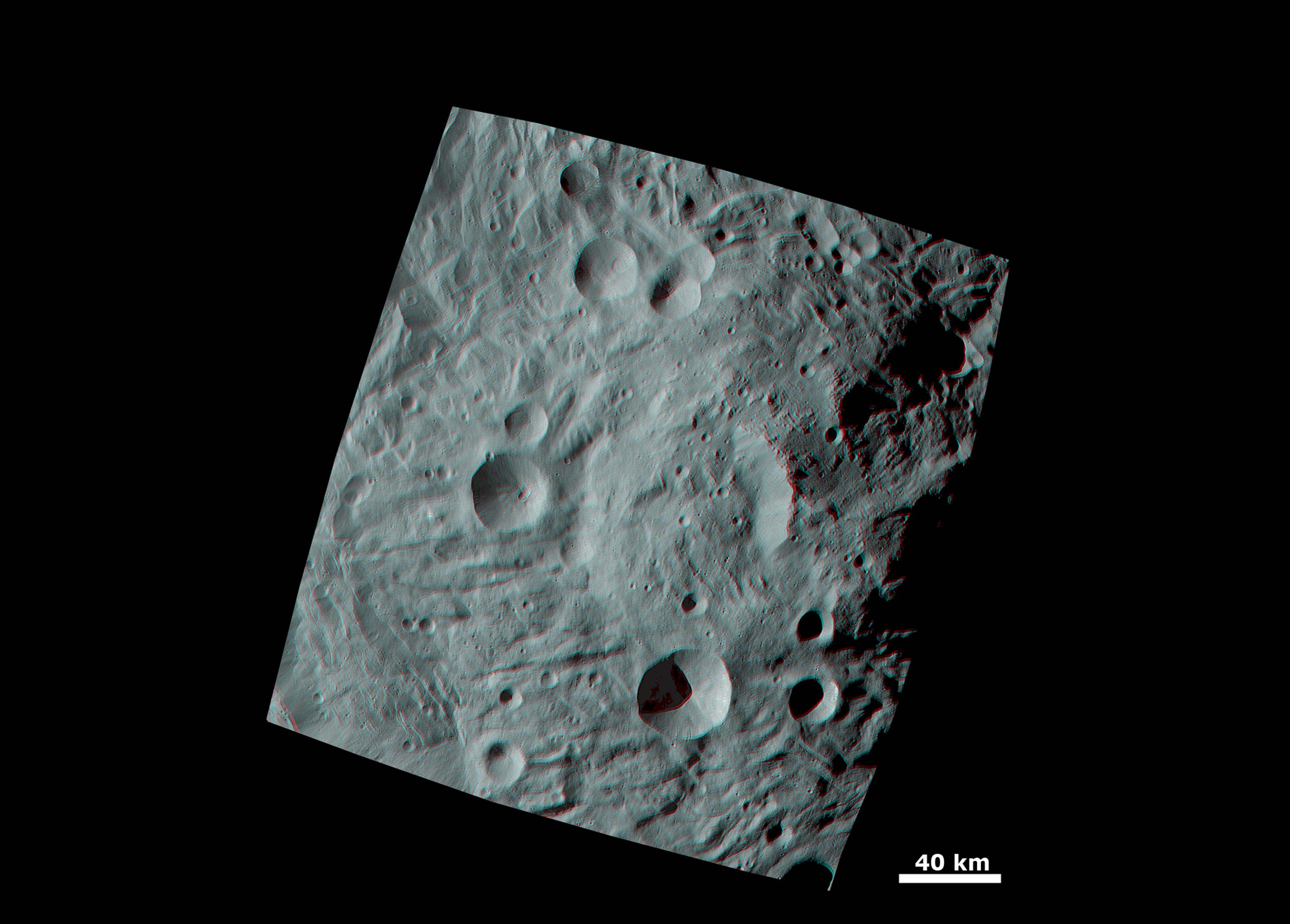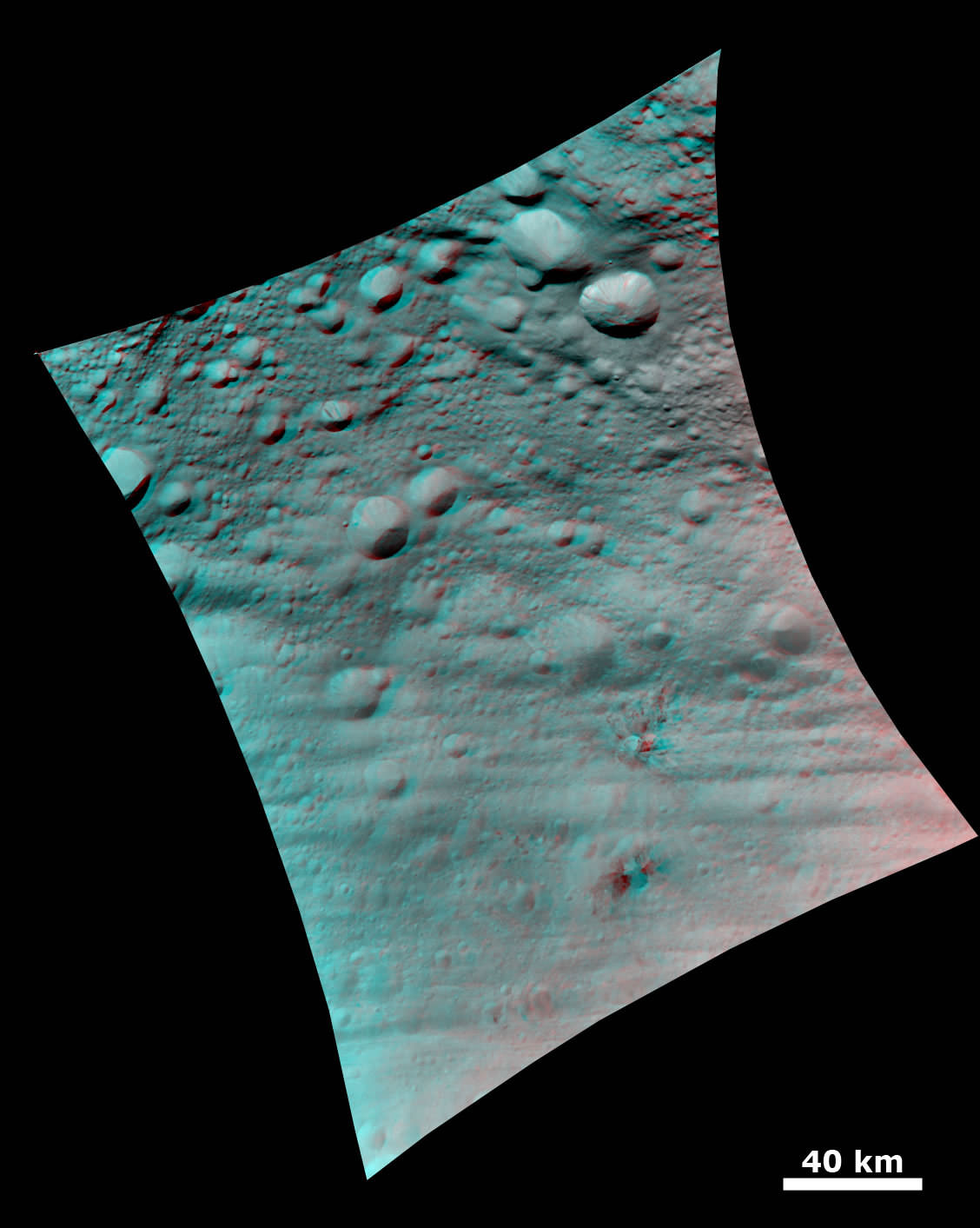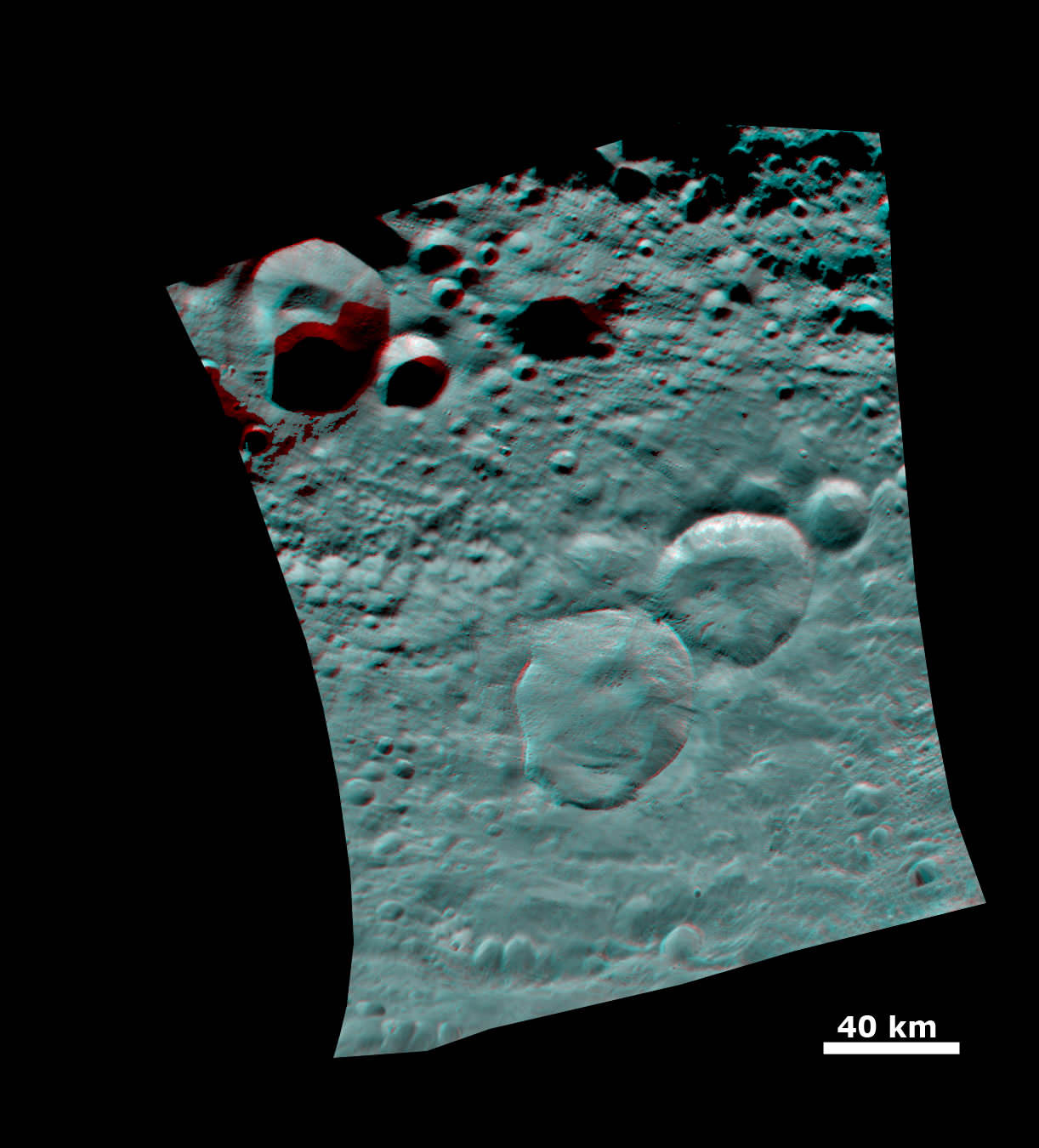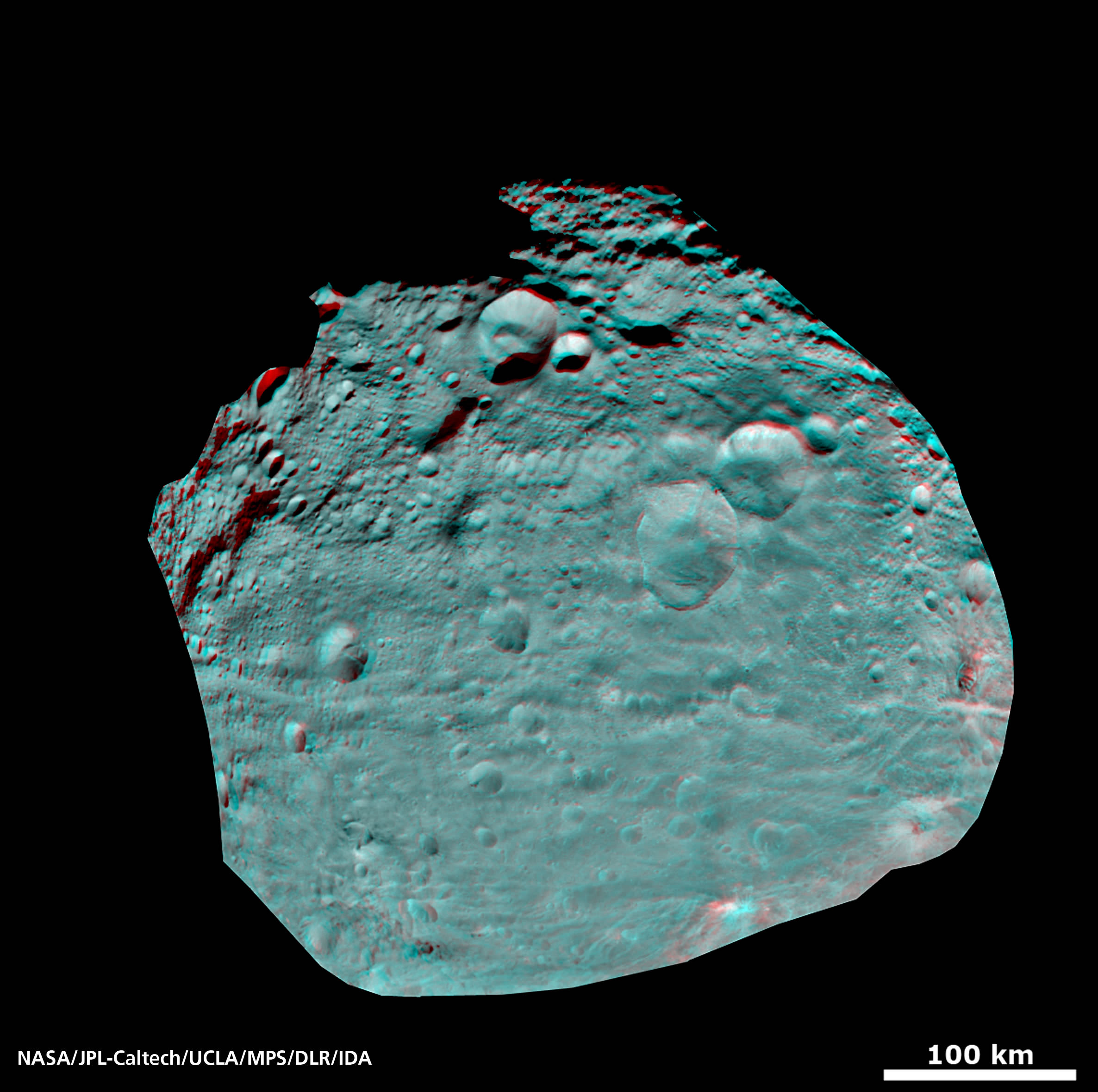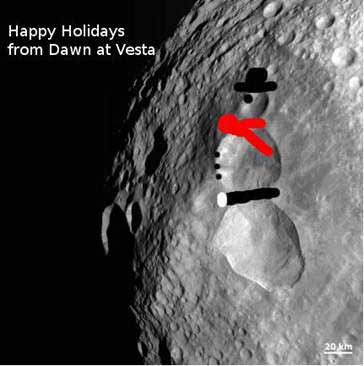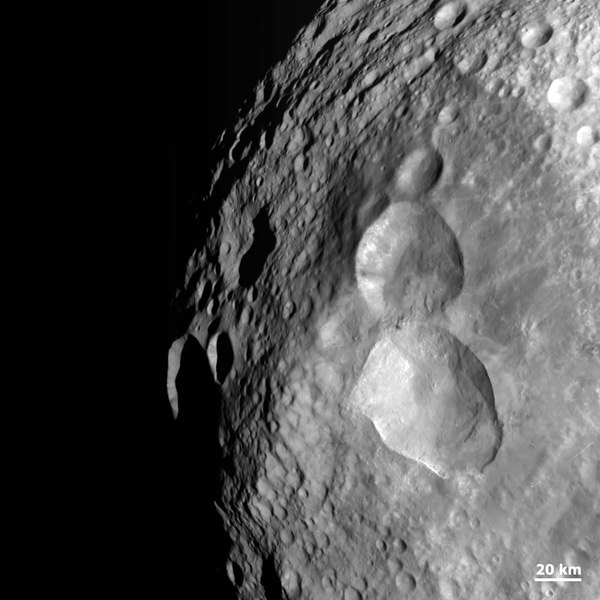PASADENA, Calif. -- NASA's Dawn spacecraft has completed a gentle spiral into its new science orbit for an even closer view of the giant asteroid Vesta. Dawn began sending science data on Sept. 29 from this new orbit, known as the high altitude mapping orbit (HAMO).
In this orbit, the average distance from the spacecraft to the Vesta surface is 420 miles (680 kilometers), which is four times closer than the previous survey orbit. The spacecraft will operate in the same basic manner as it did in the survey orbit. When Dawn is over Vesta's dayside, it will point its science instruments to the giant asteroid and acquire data, and when the spacecraft flies over the nightside, it will beam that data back to Earth.
Perhaps the most notable difference in the new orbit is the frequency with which Dawn circles Vesta. In survey orbit, it took Dawn three days to make its way around the asteroid. Now in HAMO, the spacecraft completes the same task in a little over 12 hours. HAMO is scheduled to last about 30 Earth days, during which Dawn will circle Vesta more than 60 times. For about 10 of those 30 days, Dawn will peer straight down at the exotic landscape below it during the dayside passages. For about 20 days, the spacecraft will view the surface at multiple angles.
Scientists will combine the pictures to create topographic maps, revealing the heights of mountains, the depths of craters and the slopes of plains. This will help scientists understand the geological processes that shaped Vesta.
HAMO, the most complex and intensive science campaign at Vesta, has three primary goals: to map Vesta's illuminated surface in color, provide stereo data, and acquire visible and infrared mapping spectrometer data. In addition, it will allow improved measurements of Vesta's gravity.
Dawn launched in September 2007 and arrived at Vesta in July 2011. Since beginning its first survey orbit in August, Dawn has been extensively imaging this intriguing world, sending back a bounty of images and other data. NASA-funded scientists and European scientists on the Dawn mission team will present a wealth of new findings at the joint meeting of the American Astronomical Society's Division for Planetary Sciences and the European Planetary Science Congress next week at La Cite Internationale des Congres Nantes Metropole, Nantes, France.
These findings about the giant asteroid Vesta will include information about the new coordinate system and official names of Vesta's prominent features.
A Dawn mission news conference will be held Monday, Oct. 3, 2011 at 12:15 p.m. CEST (3:15 a.m. PDT/6:15 a.m. EDT). The Division for Planetary Sciences will provide live Web streaming of this news conference, at:
http://meetings.copernicus.org/epsc-dps2011/webstreaming/monday.html
"The team has been in awe of what they have seen on the surface of Vesta," said Christopher Russell, Dawn principal investigator, at UCLA. "We are sharing those discoveries with the greater scientific community and with the public."
Following a year at Vesta, the spacecraft will depart in July 2012 for Ceres, where it will arrive in 2015. Dawn's mission to Vesta and Ceres is managed by the Jet Propulsion Laboratory, Pasadena, Calif., for NASA's Science Mission Directorate in Washington. JPL is a division of the California Institute of Technology in Pasadena. Dawn is a project of the directorate's Discovery Program, managed by NASA's Marshall Space Flight Center in Huntsville, Ala. UCLA is responsible for overall Dawn mission science. Orbital Sciences Corp. in Dulles, Va., designed and built the spacecraft. The German Aerospace Center, the Max Planck Institute for Solar System Research, the Italian Space Agency and the Italian National Astrophysical Institute are international partners on the mission team.













